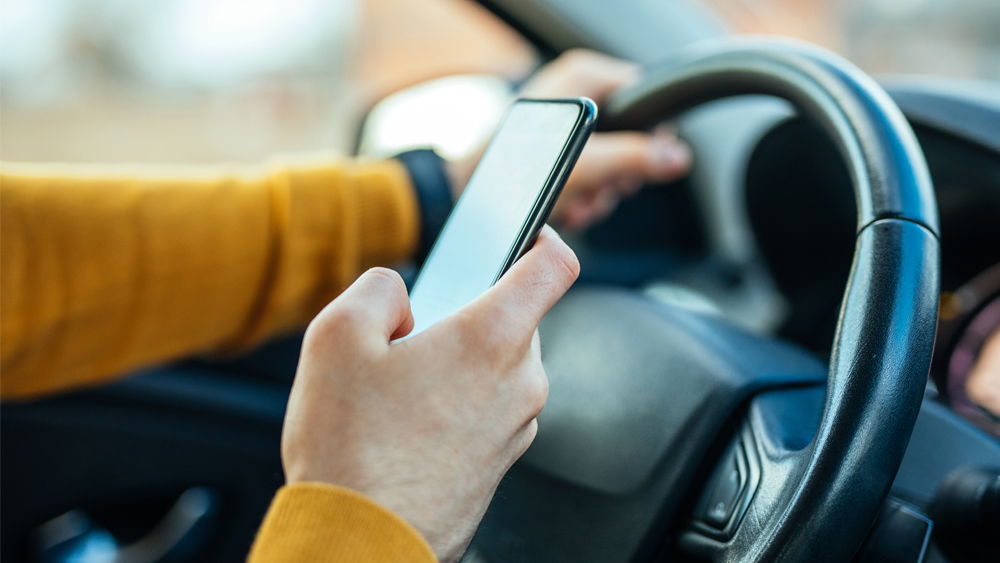
Ding — a notification goes off on a cell phone. A driver looks down and their eyes briefly leave the road ahead and crash!! Phone use while driving is a significant source of distracted driving that leads to traffic accidents, which are considered preventable.
Researchers at Texas A&M University investigated the relationship between phone use behavior and road geometrics determining that using a phone while driving is more than just a self-choice. The combination and presence of a shoulder, median, higher speed limit and extra lanes could encourage more phone use while driving. The results also confirmed the correlation between the frequency of phone use and distracted crashes on urban roads.
This study could help transportation agencies identify countermeasures on roadways to reducing distracted-related crashes and provide researchers with a new perspective to study phone-relation behavior rather than focus on the drivers’ personalities.
“This study finds patterns for where the locations are where phone use while driving behavior most occurs. These findings are unique and informative and have not been documented elsewhere yet,” said Xiaoqiang “Jack” Kong, a doctoral student in the Zachry Department of Civil and Environmental Engineering and graduate research assistant at the Texas A&M Transportation Institute (TTI). “While I am driving, I always notice many drivers who are on their phones talking, texting or scrolling. There are many times the cars in front of my car didn’t move after traffic lights turn green. It seems to happen to me every day. As a transportation Ph.D. student, I started to wonder how exactly this behavior could impact traffic safety.”
The findings of this study were published in Accident Analysis & Prevention. The paper’s authors also include Dr. Subasish Das, assistant research scientist in TTI’s Roadway Safety Division; Dr. Hongmin “Tracy” Zhou, associate transportation researcher in TTI’s Research and Implementation Division; and Dr. Yunglong Zhang, professor, associate department head of graduate programs in civil and environmental engineering.
Phone use while driving is a complex psychological behavior driven by many factors, including the driver’s personality, environmental factors and roadway operational factors.

From the roadway geometrical perspective, factors contributing to rural distracted driving cases are dominated by the shoulder width, median width and the number of lanes. The existence of a shoulder and median or a wide shoulder and median could encourage phone use behavior since these geometric features provide a safety buffer for drivers, which grants drivers a sense of security.
The same factors were true on urban roadways, such as interstates and freeways. But other contributing factors are traffic volume and access controls. On an interstate, access control means drivers are entering and exiting without traffic lights, which could lead to a feeling of safety and drivers become less cautious or alert.
One challenge facing Kong was obtaining real-world data to reflect actual phone-use behavior. Evidence showing this kind of case is often under-reported, and drivers involved in distraction-affected crashes were reluctant to admit using a phone.
Kong said this study utilized an extensive phone use while driving data set (pseudonymized), which originated from a private data service provider. The data collection process is based on a smartphone application that promotes defensive driving without being distracted by the phone. The researchers integrated all phone use while driving events with the Texas road inventory and the distracted crash count on each road segment in the road inventory from the crash database of Texas.
The data does have limitations and might not represent an older population of drivers who may not download an application to track their driving. While the most recent road inventory data was used, some data was not included, such as fixed time or adaptive signalized intersections.
“With more data, researchers may associate this phone use behavior with drivers’ social demographics. In this way, we may understand this behavior more at individual levels,” Kong said.
Future research could focus on incorporating the phone use data into safety performance function models for distraction-affected crashes. As more data becomes available, building these safety models is possible.
“More visible signs and law enforcement should be placed at these urban roads with full access control and wide shoulder and medians if these urban roadways already have higher distracted crash occurrences comparing with other urban roadways,” Kong said. “Additionally, the roadways with high-speed variations also being identified as high distracted crash locations could be the roads that need more attention from transportation agencies. The countermeasures could improve traffic conditions or more strict law enforcement.”